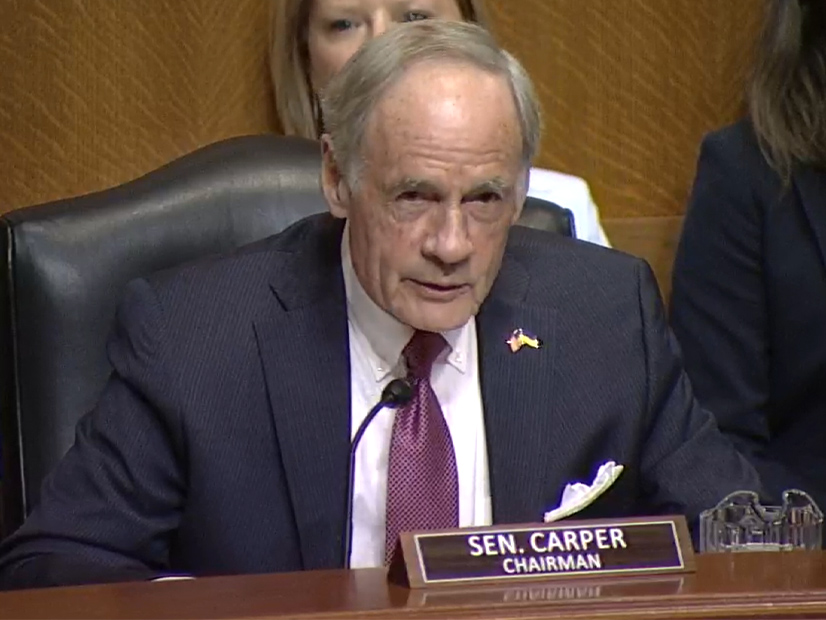Successful implementation of the Infrastructure Investment and Jobs Act and the Inflation Reduction Act may hinge on Congress’ ability to put politics aside and hammer out bipartisan legislation to streamline federal permitting, Martin Durbin, senior vice president for policy at the U.S. Chamber of Commerce, said Wednesday.
States and other recipients of federal funding from those laws “are struggling to use them since lengthy permitting processes can add years and uncertainty,” Durbin told the Senate Environment and Public Works Committee during a hearing on permitting.
Inflation combined with permitting challenges is a double whammy, he said. “The longer it takes for shovels to hit the dirt, the less we’re going to be able to build.”
Durbin was one of five speakers at the EPW hearing, kicking off the search for bipartisan solutions to the permitting logjam facing clean energy and transmission projects, as well as those related to natural gas.
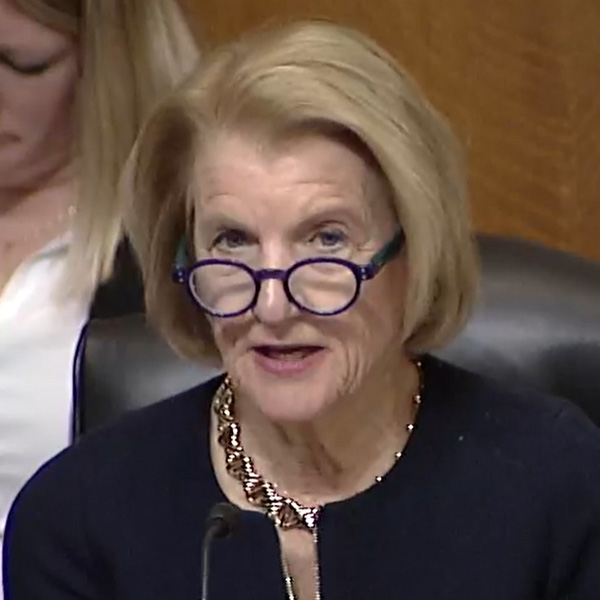 Sen. Shelley Moore Capito (R-W.Va.) | Senate EPW Committee
Sen. Shelley Moore Capito (R-W.Va.) | Senate EPW CommitteeBoth Committee Chair Tom Carper (D-Del.) and Ranking Member Shelley Moore Capito (R-W. Va.) stressed that a bipartisan bill passed through a “regular order” process — with committee hearings and negotiations, and broad stakeholder input — is needed to forge the needed compromises.
Carper’s must-haves for “permitting reform,” as the issue is commonly referred to, include lowering greenhouse gas emissions, maintaining “the fundamental protections provided by our nation’s bedrock environmental statutes” and supporting “early and meaningful community engagement.”
Legislation must also “provide businesses, especially clean energy businesses, with certainty and predictability and help unlock economic growth,” he said.
Capito wants a technology- and project-neutral approach with firm, enforceable deadlines for permitting and an expedited process for deciding legal challenges so projects don’t “drown in litigation.” She called for amendments not only to the National Environmental Policy Act (NEPA) but also to the Clean Water and Clean Air acts.
Permitting challenges “don’t just impact [project] sponsors,” Capito said. “They harm American workers and consumers with lost jobs, higher energy prices, traffic congestion, more pollution and many other missed opportunities that result from the failure to modernize infrastructure and energy systems. …
“If all we do is window-dress the failed system, it’s not an option. We’re not getting anywhere,” she said. “At the end of an honest negotiation, neither side will get exactly what it wants, and we all know that.”
Common Ground
While Congress remains preoccupied with raising the debt limit, bipartisan efforts to find common ground on permitting reform are underway in both houses, driven in part by the billions for clean energy projects and other infrastructure in the IIJA and IRA. The U.S. Chamber has also launched its own lobbying campaign, called Permit America to Build. (See Congress Doubling Down on Bipartisan Push for ‘Permitting Reform.’)
The EPW hearing focused on identifying both common ground and the harder-to-resolve flashpoints.
On the plus side were calls for early and robust community engagement and a close look at how to streamline permitting processes across federal agencies.
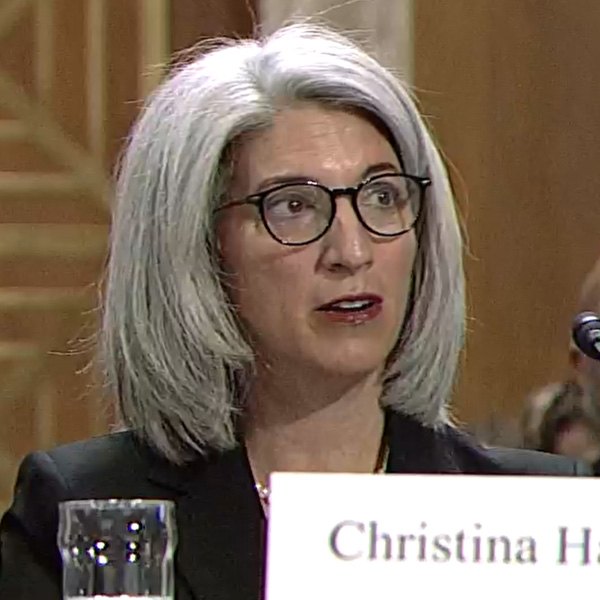 Christy Goldfuss, NRDC | Senate EPW Committee
Christy Goldfuss, NRDC | Senate EPW Committee“The U.S. must shift the value proposition around clean energy deployment and transmission and move to a model that delivers more benefits directly to communities that host this clean energy infrastructure while providing the benefits of clean energy to everyone,” said Christy Goldfuss, chief policy impact officer of the Natural Resources Defense Council. “This shift will lead to less opposition and therefore faster timelines for getting clean energy projects and transmission deployed at scale.”
Dana Johnson, senior director of strategy and federal policy at WE ACT for Environmental Justice, agreed, “We really need to start community engagement much earlier in the process … Advocates in that space noticed that when industry comes to them, when they are able to negotiate, when we have community meetings before a permitting process even begins, we are able to work in partnership to solve the challenges of bringing a project to fruition.”
The U.S. Chamber of Commerce also “fully support[s] the idea of having early engagement of affected communities with the project developers and everyone else involved,” Durbin said. “We agree that that can help to offset problems later down the road.”
 Christina Hayes, ACEG | Senate EPW Committee
Christina Hayes, ACEG | Senate EPW CommitteeStreamlining processes — without changing existing statutes — also got strong support. Christina Hayes, executive director of Americans for a Clean Energy Grid, said construction of new transmission must be doubled “to have a chance at hitting our [greenhouse gas] reduction goals. …
“Specifically, high-capacity, regionally significant transmission should go through a unified federal siting and permitting authority,” Hayes said. “Bright-line thresholds for unified federal siting and permitting authority should be clearly established, which when included [with] a single point of contact for environmental review will provide for a comprehensive and legally durable siting and permitting process. …
“Additionally, developers should consider support through community benefit agreements or revenue sharing. Mitigation beats litigation every time,” she said.
Jay Timmons, CEO of the National Association of Manufacturers (NAM), also spoke in favor of “consolidated processes with enforceable deadlines for the siting of new energy projects, including hydrogen, natural gas, nuclear and other emerging technologies, along with their infrastructure.”
Programmatic environmental impact statements (PEIS) could also promote more efficient permitting, Goldfuss said. A PEIS looks at environmental impacts across a specific region, for example, the Desert Renewable Energy Conservation Plan, which sets out areas for renewable energy development on more than 10 million acres of desert lands in seven counties in Southern California.
Such an approach could allow permitting to “move toward a ‘design one, build many’ model that decouples broad swaths of the environmental review process from individual project timelines,” Goldfuss said.
NRDC also supports “Smart from the Start” planning, which means “planning and siting development in ways that minimize potential impacts and conflict before project-by-project permitting even begins,” she said.
‘Permitting Myopia’
But any change to key environmental laws — like Capito’s call for amendments to NEPA and other environmental laws — are likely to be a point of contention.
Timmons of NAM cited figures from the White House Council on Environmental Quality (CEQ) that the environmental impact statements that NEPA may require for some projects take an average of 4.5 years to complete.
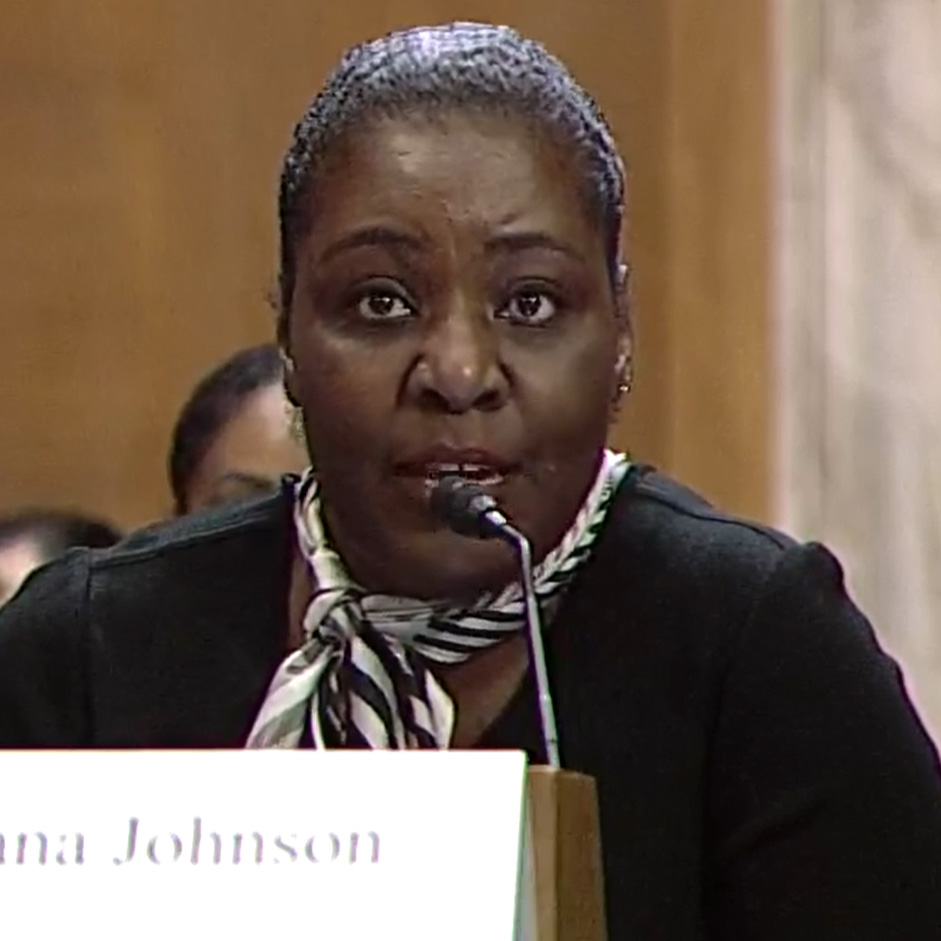 Jay Timmons, NAM | Senate EPW Committee
Jay Timmons, NAM | Senate EPW Committee“More time is spent just projecting potential environmental impacts than it takes to actually construct and operate a clean hydrogen power generation facility,” Timmons said. “We can and we should still set high standards for ourselves. Let’s just modernize the process [so there are] fewer delays, fewer needless losses.”
But Johnson argued that the delays and long permitting timelines attributed to NEPA are overstated, citing decade-old estimates from the Government Accountability Office that less than 1% of federal projects require a full environmental impact statement. Only 5% require a less rigorous environmental assessment and 95% receive a categorical exclusion, meaning no environmental review is required, she said.
Johnson also pointed to interconnection bottlenecks, not NEPA, as a major factor in delays for renewable energy projects. Other reasons for delays of large-scale energy projects include “poor project management, poor contracting approaches, contractors’ financial issues, delayed approvals, delayed payments, clients’ financial issues [and] challenges with the actual design of a project,” she said.
Goldfuss agreed that “permitting myopia” has put too much attention on NEPA. “Broad claims that the permitting process … is broken and that NEPA is the problem are not borne out by the facts,” she said.
 Dana Johnson, WE ACT for Environmental Justice | Senate EPW Committee
Dana Johnson, WE ACT for Environmental Justice | Senate EPW CommitteeInstead, she called on FERC to use its “backstop authority,” established in the IIJA, to site lines within “corridors of national interest,” which the Department of Energy must designate.
Using this authority would mean FERC could overrule state regulators and local policy makers’ decisions on such projects, something it has yet to do.
FERC must also act broadly to allocate costs for large transmission projects crossing more than one state, Goldfuss said. If not, “Congress should pass legislation requiring FERC to adopt cost allocation rules that holistically reflect the multiple benefits of transmission.”
How effective such legislation might be is uncertain given FERC’s stalled efforts to approve new transmission planning and cost allocation rules with its current membership of two Democrats and two Republicans.
Both Carper and Sen. Ed Markey also pointed to the $1 billion in IRA funding to help federal agencies hire new staff and improve their permitting processes. That money represents “a new cure,” Markey said. “Now we’re applying the medicine, and we’re waiting for it to kick in.”
The House Debt Ceiling Bill
The narrowly passed Republican bill on the debt ceiling was a tangential concern in Wednesday’s hearing.
Markey noted that the spending cuts in the bill would include the $1 billion to fund permitting improvements across federal agencies. “They want to starve the agencies and then say, ‘Look how long it takes,’” he said.
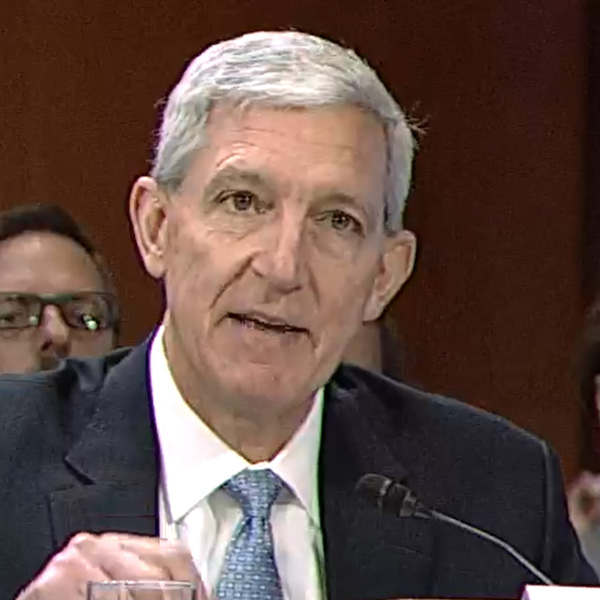 Martin Durbin, U.S. Chamber of Commerce | Senate EPW Committee
Martin Durbin, U.S. Chamber of Commerce | Senate EPW CommitteeHe also defended NEPA as “a safeguard for communities. We need robust, upfront community engagement to power communities with clean energy while empowering them to be part of the [process].”
Sen. Sheldon Whitehouse (D-R.I.) grilled both Durbin and Timmons on whether they would support bipartisan permitting reform crafted by the EPW Committee versus GOP permitting changes in the debt ceiling law, which would primarily push for quicker permitting for fossil fuel projects.
Timmons sidestepped the question, saying NAM was not “going to engage in picking winners and losers between House versions and Senate versions. The interest is in working on a bipartisan … proposal that will actually get done, that everyone can feel good about.”
Durbin said the Chamber had supported H.R. 1, the GOP energy bill included in the debt ceiling package. “We think it does move the ball forward,” he said, but the organization also remains “fully committed to a bipartisan process.”
